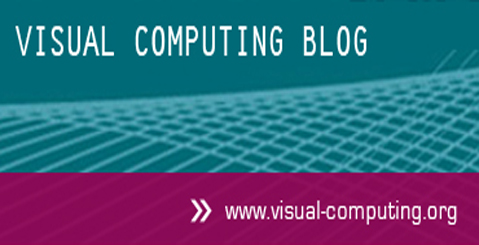The scientists of the SFB-TRR 161 develop software applications, collect research data, and create benchmarking data sets within their scientific work. Here we provide access to our results for other scientists and developers.
DaRUS
The majority of reserach data produced by the SFB-TRR 161 is managed in DaRUS, the data repository of the University of Stuttgart. This system is available for use by all SFB-TRR 161 researchers, regardless of their affiliation. DaRUS is inlcuded in the Registry for Research Data Repositories, and published datasets can quickly be found, either by using DaRUS's own search engine or Google's dataset search.
Dataverse of the SFB-TRR 161 on DaRUS: https://darus.uni-stuttgart.de/dataverse/TR161
Spring Benchmark
At the IEEE/CVF Conference on Computer Vision and Pattern Recognition (CVPR) 2023 in Vancouver, Canada, a group of our researchers presented a new high-detail and high-resolution benchmark for evaluating algorithms to estimate stereo displacements (disparity), 2D motion information (optical flow) and 3D motion information (scene flow). The benchmark is based on the Blender short movie "Spring" and depicts several scenes recorded with a virtual stereo camera. The contained sequences allow the training of neural networks for stereo and motion estimation as well as the evaluation of trained neural networks to quantify their performance regarding several aspects including overall performance, detailed regions, non-rigid regions, occluded regions and sky regions.
For more information visit https://spring-benchmark.org/
TRRojan
The TRRojan is an extensible, cross-platform benchmarking framework for visual computing applications. It uses a plugin architecture to be easily extended with additional applications. The framework allows for automatically evaluating all combinations of influencing factors (rendering parameters, resolution, data set, etc.) based on a simple declarative description. The TRRojan is designed to effectively carry out quantitative benchmarks in a clean, reproducible, and easy-to-use manner.
For more information visit www.trrojan.visus.uni-stuttgart.de
Visual Quality Databases
A group of our scientists design prediction algorithms for the visual quality of images and videos, with respect to technical and perceptual aspects e.g. quality of experience (QoE). The tools of their trade include crowdsourcing, machine learning i.e. deep networks, eye-tracking. Consequently, they are creating massive multimedia databases that are suitable for training generic and accurate VQA models.
Visual Quality Databases
KoNVid-1k | Video benchmark database
KonIQ-10k | Ecologically valid image benchmark database
IQA-Experts-300 | Expert annotated image benchmark database
KADID-10k | Artificially distorted image database
KonPatch-30k | Patch-wise image quality assessment
IQA-Experts-300 | Expert annotated image benchmark database
KoSMo-1k | Slow-motion video database
StudyMB 2.0 | Subjective IQA of the interpolated images from Middlebury
For more information visit database.mmsp-kn.de
FOR SCIENTISTS
Projects
People
Publications
Graduate School
Equal Opportunity
FOR PUPILS
PRESS AND MEDIA
© SFB-TRR 161 | Quantitative Methods for Visual Computing | 2019.








